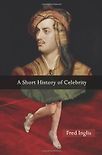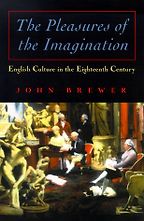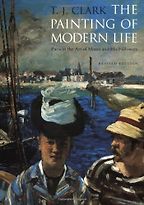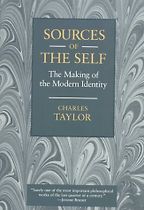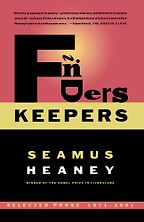Tell me about your first book, Local Knowledge by Clifford Geertz.
Clifford Geertz is a much travelled American, who is probably the greatest anthropologist of the last 60 or 70 years. Local Knowledge, as the title tells you, is based on the insistence that life is lived locally and that you find culture in action locally. Attempts to generalise right across the world are going to mislead you. In his book there are two or three essays which I had by me as my working intellectual tool kit when I was writing my book on celebrities. For example, there is one where he is talking about the use of charisma. Of course, when I was writing my book the notion of charisma is much evoked.
“Celebrities are no doubt connected with what they have done. They are also defined by the way in which they are seen and what they are made into by their audiences.”
What I think Geertz brings out so vividly is that whatever charisma is it attaches itself not just to individuals but to people with a particular social position. In his book he quotes the saying about a duchess never being more than 100 yards from her carriage because you need a carriage in order to qualify as a duchess! He then turns from this to the study of kingship and the ways in which the great monarchs of former history established their rule by being intensely visible in a series of processions and displays.
Five Books interviews are expensive to produce. If you're enjoying this interview, please support us by donating a small amount.
He is good at distinguishing between the idea of celebrity and that of renown. People in pre-modern societies were renowned partly by virtue of their position – as the monarch was – and partly by virtue of their accomplishments. But celebrity is a different sort of creature when it comes along in the middle of the 18th century. Celebrities are no doubt connected with what they have done. They are also defined by the way in which they are seen and what they are made into by their audiences, and that distinction is one I analysed throughout my book.
Your next book leads on from that, and is The Pleasures of the Imagination by John Brewer.
Yes, if we hitch these two books together then you get some idea of why my own book starts off in the middle of the 18th century. One of the things that Geertz notes is that the people of renown he was looking at from eras like Elizabethan England and the pre-modern monarchs of the North African 18th century all act as from the sacred importance of the court and the glow it gives off.
What happens in England in the 18th century is that the first modern city is established – the City of London – and it replaces the court as the centre of social significance. One of its main new purposes was the organisation and industrialisation of leisure and the classification of fame. The celebrity as we begin to understand it turns up on the streets of London in the middle of the 18th century. And this is something that John Brewer’s book is very good at illustrating.
He talks about the great celebrities of the day like the painter Joshua Reynolds, who set out to become famous and threw enormous parties in his great house in Leicester Square precisely so that they would be talked about. So already you can see the parallels with today’s celebrities. But it was not just a matter of courting fame – these people were genuinely talented. And there were these new groups of people who, in terms of their accomplishments, formed little clubs and were known to be forming them because of their fame. For example, you have the writer Doctor Johnson’s club, and the people who attended that were themselves accomplished writers, scholars and intellectuals.
And of course one of the most famous people on the scene at the time was the Prince of Wales, the heir to the throne, and this is the point at which the royal family in Britain begins to become the subject of intense gossip. The Prince of Wales conducted a very conspicuous affair, and pretty much built Brighton Pavilion so he could do this a little way out of London!
Your next book is set in 19th-century Paris, T J Clark’s The Painting of Modern Life.
The second stage of my history of celebrity focuses on Paris at this time. A new kind of phenomenon is beginning to declare itself, which is the process whereby the fashion industry becomes industrialised and the whole novel notion of glamour attaches itself to people who are known and recognised. T J Clark wrote his wonderful book to study how the great painters of the day, people like Manet, Renoir and Redon, depicted the new, very appearance-conscious life of the city. The Impressionists took off at that time because people of the day aspired to public self-display and therefore, as we understand it, celebrity.
“The fashion industry becomes industrialised and the whole novel notion of glamour attaches itself to people who are known and recognised.”
Some of Manet’s best paintings mark out the coincidence of the new fashion and the new self-displaying class. In his painting of the garden at Tuileries the people portrayed were almost all his friends and acquaintances. Manet himself is also in the picture and you can see that people are in the latest fashions. Clark’s wonderful book traces those processes through the paintings. And at the same time he follows up what Brewer was talking about in Pleasures of the Imagination, which is a new type of leisured life, especially in rather shady bars which hovered on the edge of ordinary drinking bars, dance halls and bordellos.
Manet’s famous picture of the girl at the bar of the Folies Bergère shows in the mirror behind the bar the whole scene in the theatre. And this is one of the pictures of the day which most marvellously shows this new kind of social life.
Your next choice is Sources of Self by Charles Taylor.
What is so powerful and marvellous about Taylor’s book is what the title announces – this deep question of where do we get our ideas of ourselves from? And the answer is history. We tend to suppose that our selfhood is something tremendously precious and all our own. And one of the things that I am at pains to emphasise in my book is that we are wholly made out of our history, including our most intense and personal feelings.
At one point I sketch out a short history of feelings to indicate how different frames of feelings emerge from this period across 200 or 300 years. Those frames of feelings co-existed, and this is something Taylor brings out with beautiful force. For example, he shows how the Romantic Movement brought in a new place for passionate feeling as itself the vindication of who one is.
I have tried to analyse this through Verdi’s Traviata. There, supremely, we find dramatised this idea that our strongest feelings belong to the truest version of ourselves. But at the same time that is at odds with another frame of feeling, which is dictated by class. There we find the practice of the alternation of deference on the one side and condescension on the other. So the powerful condescend in the old-fashioned sense of the word, i.e, to indicate their proper sense of social position, which then needed gratifying by the people with whom one did social business.
This whole concept was knocked sideways by the Romantic Movement’s idea that I am as good as the next person and equality is more important than due respect for persons. Taylor’s great book traces those sources. The celebrity in all this becomes someone who will have identified for us what feelings we ought to be having.
Where do you think that leaves us today?
My history picks up a new kind of inspection of the feelings which begins to come over us during the 20th century, which can be traced in the famous novelists between about 1880 and 1920: I mean writers such as Marcel Proust, Virginia Woolf and particularly Henry James, in whose work people aren’t sure what they feel, and study their feelings minutely in order to find out what they are and then what to do about it.
“The celebrity in all this becomes someone who will have identified for us what feelings we ought to be having.”
The intense study of one’s feelings in a spirit of truthfulness to oneself becomes a characterising moment as the 20th century advances. And of course you then get the trade of feeling therapy and psychoanalysis just because we are no longer sure of our true feelings. And as time goes by many people find they don’t feel anything and they have to bully themselves in order to have some feelings. Celebrity in all this business is, you might say, the public dramatisation of our best and worst feelings, and endlessly discussed as such.
Tell me about your last book, Finders Keepers by Seamus Heaney.
I could happily have chosen any of his books, but I went for this collection of essays because I don’t want to be accused of being negative about the whole cult of celebrity. Seamus Heaney is part of my redress against this. One positive thing celebrities can do for us is to dramatise those values and meanings which we think of as important and commendable. They can do that in the tormented way of a gossip magazines or the admirable, generous-hearted but always accurate way which you find in Seamus Heaney’s collections of both poems and essays.
[enail]
Heaney dramatises the key value of distinctive individuality. We all want to be our own person and Heaney is someone whose individuality is highly distinctive, which comes out not only in his writing but also in the way he lives. He is supremely alive to the conditions of life in the early 21st century. If you are going to be an individual he is a very good one to be. He is known, of course, as Famous Seamus and I think you see this heroic individuality in him, without any of the grislier aspects of fame.
Five Books aims to keep its book recommendations and interviews up to date. If you are the interviewee and would like to update your choice of books (or even just what you say about them) please email us at [email protected]

